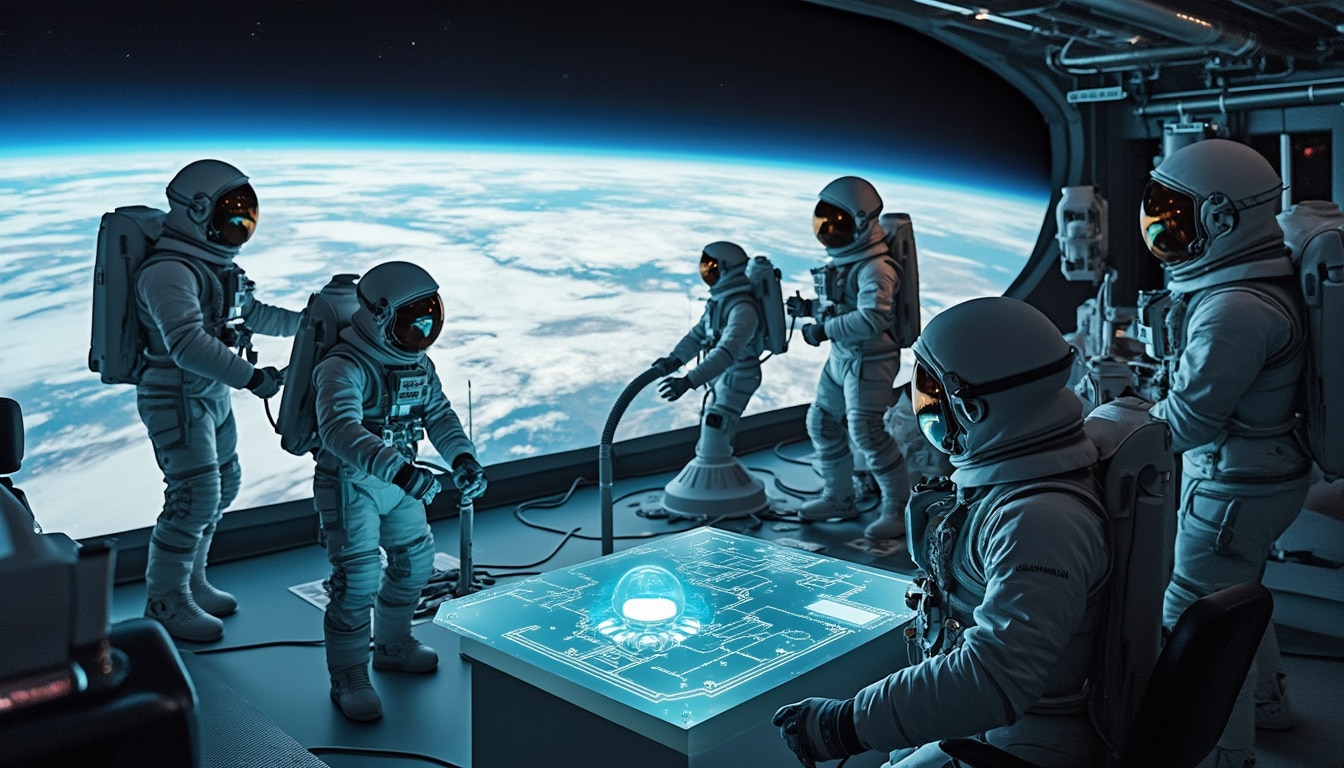The recent announcement from NASA regarding the opening of bids for two private astronaut missions to the International Space Station (ISS) heralds a new chapter in commercial space exploration. This opportunity not only enhances the role of private companies but also marks a significant shift in how astronaut missions can be structured and managed. For the first time, missions may be led by non-NASA trained astronauts, a move aimed at broadening the horizons of crew command in space. As NASA delves deeper into its mission of fostering a sustainable low Earth orbit (LEO) economy, the involvement of enterprises such as Axiom Space, SpaceX, Blue Origin, and others will prove crucial in shaping humanity’s future in space.
This initiative builds on previous successful missions and reflects a commitment to commercialize spaceflight by leveraging the proficient experience developed over decades at NASA. The selected private astronaut program (PAM) missions will foster partnerships that not only refine operational capabilities but also push the boundaries of scientific research in space.
The Future of Private Astronaut Missions
NASA’s call for proposals sets the stage for what could potentially become one of the most significant turning points in space exploration. With the aim of having missions operated not solely by ex-NASA astronauts, the program opens doors for a variety of candidates including those from international space agencies like ESA and JAXA.

Understanding the PAM Program
The Private Astronaut Missions (PAM) initiative was established to encourage the commercialization of space and to scout for capable partners in this blooming sector. Not only does it reduce the burden on NASA to train each astronaut, but it also invites innovative minds from the private sector to bring their expertise to operational roles. Recent developments show that missions PAM 5 and PAM 6 will be pivotal in maintaining an annual schedule for private missions to the ISS, which is poised for a significant future.
As outlined in NASA’s solicitation, one of the notable changes involves the ability to propose commanders from international space agencies, expanding the pool of candidates who could lead these missions. The conditions for selecting these leaders include previous ISS operational experience and relevant training. This flexibility could encourage private companies like Axiom Space, which has become a frontrunner by securing previous PAM contracts, to devise new strategies for mission leadership.
The Role of Private Companies
Companies like SpaceX, Blue Origin, Virgin Galactic, and Axiom Space are driving forces behind this evolution. SpaceX continues to showcase its capabilities with the Crew Dragon spacecraft, which has already proven its reliability through multiple missions. Axiom Space has already successfully launched missions, carving its niche in commercial astronaut travel and generating opportunities for private astronauts to participate in scientific research aboard the ISS.
This new wave of missions signals a future where space is seen as an accessible domain, where commercial activities are harmonized with scientific research, and where private entities can contribute significantly beyond mere logistical support. The influence of companies like Boeing and Lockheed Martin cannot be overlooked either, as they play vital roles in infrastructure development and technological advancements in space.
Implications for the International Space Station
The International Space Station remains a cornerstone for scientific research and international cooperation. The expanded role of private astronauts will further this objective while also ushering in new scientific experiments and commercial ventures that can be conducted in microgravity environments. Keeping the ISS operational and relevant is crucial, especially as discussions around its eventual replacement with commercial stations gain momentum. As Dana Weigel, NASA’s ISS program manager, mentioned, the PAMs are a critical component in refining capabilities for future missions.

Economic Benefits and Opportunities
The push for private astronaut missions facilitates economic growth by offering companies the chance to develop partnerships and foster a commercial ecosystem in low Earth orbit. As NASA pivots towards supporting a vibrant LEO economy, the opportunities for technological innovation and economic expansion are vast. The missions not only generate revenue for private enterprises but also contribute to job creation across multiple sectors including aerospace engineering, research and development, and logistics.
- Increased collaboration between NASA and private companies enhances operational knowledge.
- New job opportunities emerge in the growing field of commercial space travel.
- The introduction of alternative revenue streams for scientific research in microgravity.
Scientific Research Opportunities
The launch of private astronaut missions has far-reaching implications for scientific research. Through collaborations with various commercial partners, NASA can significantly increase the scope of experiments conducted in microgravity. These private missions are designed to support the research community’s push towards novel and innovative experiments that can capitalize on the unique conditions provided by the ISS.
Results from such missions can lead to advancements in numerous fields including medicine, materials science, and technology. Companies like Rocket Lab and Sierra Space are already engaging in initiatives aimed at maximizing these research opportunities, further establishing their commitment to the burgeoning space sector.
Competition Among Commercial Spaceflight Companies
The competitive landscape for private astronaut missions is heating up, as Axiom Space’s dominance faces challenges from an increasing number of aspirants. New players like Vast, which is also developing commercial space stations, signify a growing interest in this emerging sector. The latest solicitation for PAMs represents a pivotal moment that may reshape the landscape as more stakeholders begin to submit proposals.
A Look at the Upcoming Missions
As the current proposals unfold, the stakes are high for incoming companies. NASA’s announcement of PAM 5 and PAM 6 signals a continuing commitment to annual private astronaut missions that delve into uncharted territories of commercial space travel. The future looks promising, as the upcoming missions are strategically scheduled around opportunities for collaborative research and commercial initiatives that can not only benefit NASA but the global scientific community as well.
The timeline set forth indicates that PAM 5 is projected for late 2026 while PAM 6 is targeted for mid-2027. These timelines ensure that private companies have the leeway they need to innovate and refine their systems, potentially leading to a plethora of successful missions that yield valuable scientific findings.
With great exploration comes necessary oversight. It is pivotal for regulatory frameworks to keep pace with the evolving commercial space landscape. As the involvement of various private companies increases, so does the complexity of ensuring safety, environmental sustainability, and adherence to international guidelines for space activities. Governments and space agencies must pave the way with robust policies that enable the private sector to flourish while ensuring that ethical considerations remain at the forefront of missions.
Conclusion: A New Era Begins
The recent developments surrounding the private astronaut missions promise to catalyze a transformative era in space exploration. With opportunities expanding for diverse leadership in astronaut missions, greater collaboration among international space agencies, and increasing participation from private companies, the future holds exciting prospects. With organizations like NASA, Axiom Space, and others leading the way, the potential for advancements while reinforcing the scientific community is boundless.
The integration of commercial capabilities alongside traditional space agencies signifies a landmark shift toward a more collaborative, innovative, and economically viable approach to human spaceflight. The journey ahead signals an exciting time for all stakeholders involved, from aspiring astronauts to enthusiastic spectators eagerly awaiting the next marvels above.
| Category | Spacecraft | Company | Year of Launch | Mission Objective |
|---|---|---|---|---|
| Private Astronaut Mission | Crew Dragon | SpaceX | 2021 | Transport private astronauts to the ISS |
| Commercial Research | Boeing CST-100 Starliner | Boeing | 2022 | Conduct research and tests in LEO |
| Private Astronaut Mission | Dragon 2 | Axiom Space | 2023 | Private astronauts aboard ISS |
| Commercial Research | Crew Dragon | SpaceX | 2026 | Expand commercial research opportunities |




Leave a Reply